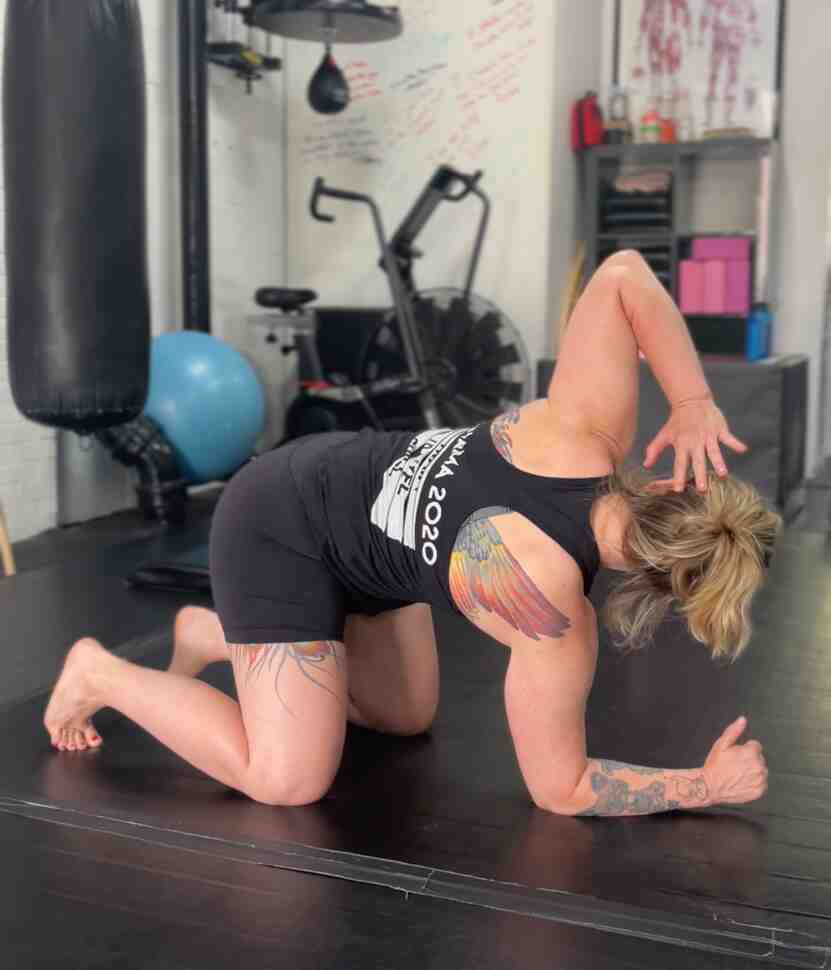
Unlock Thoracic Rotation: The Overlooked Back Mobility Secret
Ever watch a client struggle through a "perfect" deadlift setup, only to see their shoulders round forward like they're hugging an invisible beach ball? Or maybe you've coached someone through endless cat-cows, hoping this session will finally free up their stubborn mid-back?
Here's the thing most of us miss: We're only playing with half the deck.
The Missing Piece in Your Mobility Puzzle
Picture your spine as a Swiss Army knife. Sure, you can open and close it (flexion and extension), but what makes it truly functional is its ability to twist and turn. Yet somehow, when it comes to thoracic mobility, we've all become obsessed with just the folding part.
Your thoracic spine is designed to rotate – it's literally built for it. Those facet joints? They're angled to encourage rotation. But if you're like most trainers, you're probably spending 90% of your mobility work on flexion and extension movements.
No wonder your clients still move like rusty robots.
Why Rotation Changes Everything
Think about real life for a second. When was the last time you moved purely forward and back? Unless you're a nutcracker soldier, probably never. We reach across our bodies, look over our shoulders, swing golf clubs, throw punches, and twist to grab that protein shake from the backseat.
Life happens in rotation. So why aren't we training for it?
When you unlock thoracic rotation, something magical happens:
- That chronic shoulder impingement? Often disappears
- Lower back pain from compensatory movement? Dramatically reduced
- Athletic performance? Through the roof
- Overall movement quality? Night and day difference
But here's where it gets really interesting...
The Systematic Approach That Actually Works
In our video below, our Director of Mobility and Movement (Sara Lajeunesse) breaks down a kneeling thoracic rotation exercise with three progressive levels. Watch how she moves – notice the control, the intention, the lack of compensation from other areas.
This isn't just another mobility drill to add to your toolbox. It's a window into how systematic mobility training actually works. See how each level builds on the last? That's not by accident. It's the same approach we use throughout our entire mobility system – progressive, intentional, and based on how bodies actually adapt.
What Most Trainers Never Learn
Here's what separates good trainers from exceptional ones: understanding that mobility isn't just about making things move more. It's about creating movement options that translate into better training, better performance, and better results.
When you approach mobility systematically – not just throwing random stretches at the wall to see what sticks – you start to see patterns. You understand why that runner's knee pain might actually start in their thoracic spine. You catch compensations before they become injuries. You help clients achieve positions they never thought possible.
And suddenly, you're not just another trainer. You're the trainer who "fixed" what three physios couldn't figure out.
Your Next Move
If you've been nodding along thinking, "This makes sense, but I want to dive deeper," then you're exactly who we created our Agatsu Mobility Seminars for.
We don't just teach exercises – we teach you how to think about movement. How to assess, progress, and integrate mobility work that actually transfers to real performance. How to spot the hidden restrictions that are holding your clients back.
Because here's the truth: The fitness industry is full of people who can make you sweat. But professionals who can systematically improve how you move? That's a much shorter list.
Ready to join it?
Explore our upcoming Mobility Seminars and discover what you've been missing. Your clients (and your own body) will thank you.

Leave a comment